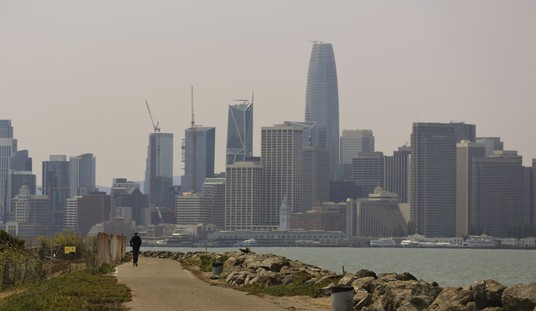If I’d asked you to predict 12 and a half months ago as America began locking down whether suicides and road fatalities would rise or fall in 2020, you would have guessed there’d be many more of the former and far fewer of the latter. And when I say “you,” I mean all of you. It seemed a fait accompli that mass unemployment plus intense social isolation plus the stress of manifold life disruptions (e.g., schools closing) that came with pandemic living would drive some people to take their own lives who in normal times would have been fine. And because so many businesses and workplaces were closed and so many Americans were afraid to congregate and risk infection, there’d be far less reason to drive and therefore fewer dangerous car accidents.
Elementary logic in both cases. Also wrong in both cases.
First, traffic deaths:
The nonprofit National Safety Council estimates in a report issued Thursday that 42,060 people died in vehicle crashes in 2020, an 8% increase over 2019 and the first jump in four years.
Plus, the fatality rate per 100 million miles driven spiked 24%, the largest annual percentage increase since the council began collecting data in 1923…
Last year’s deaths were the most since 2007 when 43,945 people were killed in vehicle crashes. In addition, the safety council estimates that 4.8 million people were injured in crashes last year.
Traffic deaths increased last year even though Americans drove an estimated 13 percent fewer miles than they did in 2019. How?
Circumstantial evidence points to greater risk-taking by drivers. USA Today notes that the Minnesota State Patrol handed out twice as many tickets for driving over 100 mph last year as they did during 2019. Precisely because roads are less congested, drivers are driving like maniacs, which means more fatal accidents. Hit a pole at 40 mph and you might survive; hit the same pole at 80 mph and nope. Pandemic stress is probably contributing too: A driver who’s depressed with a lot on his mind is a more distracted driver. And greater use of alcohol and drugs during the pandemic must mean that a greater share of people who are behind the wheel are under the influence.
Long story short, it’s basically Thunderdome on American roads. Fewer people are driving, but the average driver you encounter is more likely to be in a dangerously bad headspace. Result: More deaths.
Explaining the decline in suicides is harder:
Politicians told us repeatedly that lockdowns were causing increased numbers of deaths by suicide. We kept asking to see the data. Now, we have it, and apparently, this was not true. In 2020, deaths by suicide were lower than in the previous three years. https://t.co/YbLCmd0c3o pic.twitter.com/PNEshYyQfV
— Elizabeth Jacobs, PhD 🏴☠️ (@TheAngryEpi) April 4, 2021
That seems so unlikely that you wonder if the data is correct. I should note that it’s “preliminary” so maybe it’ll eventually be revised upwards. But assume it’s accurate. What could conceivably explain it? I asked that question on Twitter and got a number of smart replies back:
1. Although suicides are down, fatal overdoses are up. Some number of people who were depressed and might have eventually taken their own lives because of it may have been lost to ODs before they could do so due to heavier drug use.
2. Similarly, some number of people, especially older people, who would have died from suicide ended up succumbing to COVID before they could.
3. Despite mass unemployment, some lower-class people’s finances may have temporarily improved due to stimulus checks and beefed-up federal unemployment. A Gallup poll taken last June, two months after the lockdowns began, found more Americans upbeat about their finances than they were in 2017. Some who might have succumbed to despair and killed themselves due to poverty in normal times might have been given a reprieve by COVID relief.
4. Forcing people to isolate with their families may have led them to have more meaningful social interactions, which boosted their moods. I’ve heard many parents say how much they enjoyed extra quality time with their kids this past year notwithstanding the hardships of getting them educated. Some adults who’d soured on life due to work pressures may have gotten an unexpected perspective check from spending more time with loved ones and regained their will to live.
5, Suicidal people rarely do the deed in front of others. Even if someone who’s suicidal isn’t enjoying the extra time with family, as a purely logistical matter, quarantine has left them with less alone time. As Alex Griswold says, spouses and children are in a position where they’re all but forced to keep watch over each other 24 hours a day. Fewer opportunities for suicide means fewer suicides.
6. Some of us do better alone than when we’re forced to mix with others. Someone with social anxiety who’s no longer required to go to the office every day and feel “judged” by those around them may have had their stress decrease after being allowed to work from home. Or maybe it’s the opposite — people who keep to themselves and were depressed by having little social contact pre-pandemic suddenly saw others reaching out to them to say hi as pandemic loneliness spread across the population. That little bit of extra virtual socializing may have been enough to prevent some suicides.
7. Many Twitter pals pointed out that knowing that others are isolated may have led some depressed people to feel less bad about themselves. It’s easy to despair when things seem to be going well for everyone but you; the “what’s wrong with me, why can’t I be happy?” FOMO factor compounds the misery. But when everyone’s miserable for the same reason, the depressed person no longer judges themselves so harshly. Everyone’s in the same boat suddenly, even if they’re each in their own little isolated cabin. Eliminating the fear of missing out may have saved some lives.
The ominous thing about all of the above is that most of the factors point to an increase in suicide once the pandemic ends. The FOMO factor will return dramatically as most Americans start to party; loners will be forced back to the office in many cases; families will disperse during the day; federal largesse will end. Of course, more opportunities to socialize will also avert some suicides by people who would have killed themselves if forced to isolate at home for much longer. But if we had to predict now whether more or fewer people will die by their own hand in 2021 than last year, I don’t know that “fewer” is a strong bet just because the country will soon be getting back to normal.
By the way, look again at the 2020 column in the tweet above. Deaths are up sharply in a diverse number of categories, from diabetes to stroke to Alzheimer’s to heart disease to “unintentional injuries.” One reason for that may be listing comorbidities as contributing causes on death certificates in COVID cases. Another, I’d guess, is people’s greater reluctance to seek medical treatment for conditions unrelated to COVID during the pandemic for fear of being infected at the hospital. I remember EMTs in New York City reporting last spring that the number of people they’d find dead in their homes upon arrival after the 911 call was freakishly higher than it was in a normal year. Presumably that’s because a lot of Americans tried to manage their preexisting illnesses as best they could on their own, seeking to stay away from doctor’s offices, and only finally called for help when they reached the point of crisis. COVID didn’t cause those deaths but it was a heavy indirect contributor.








Join the conversation as a VIP Member